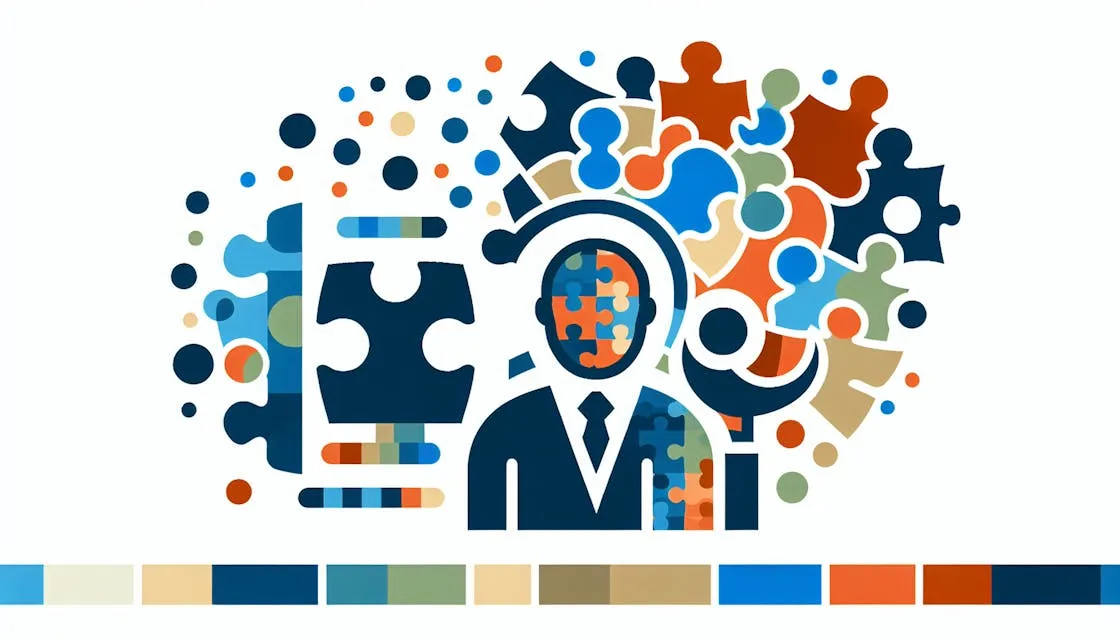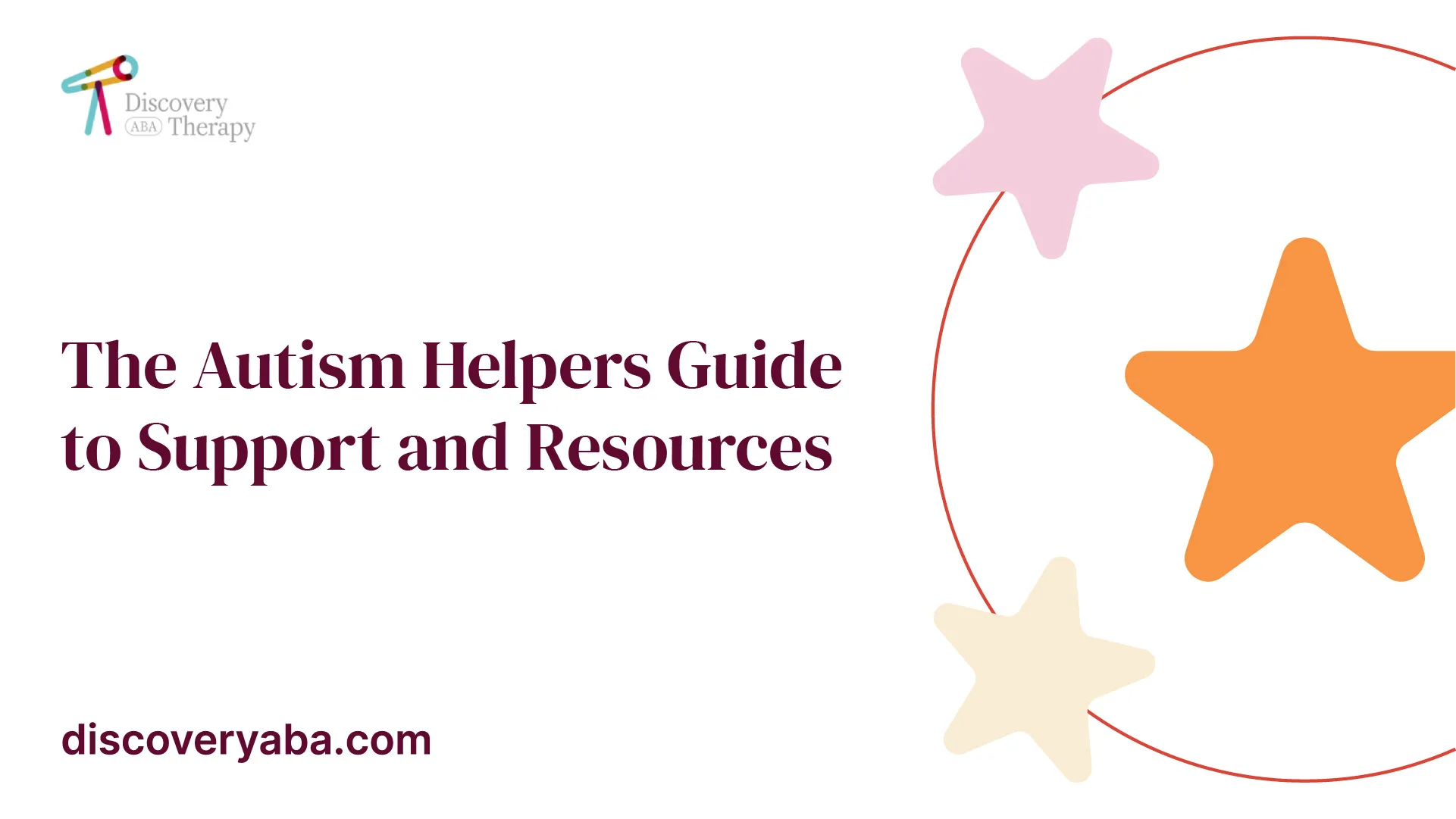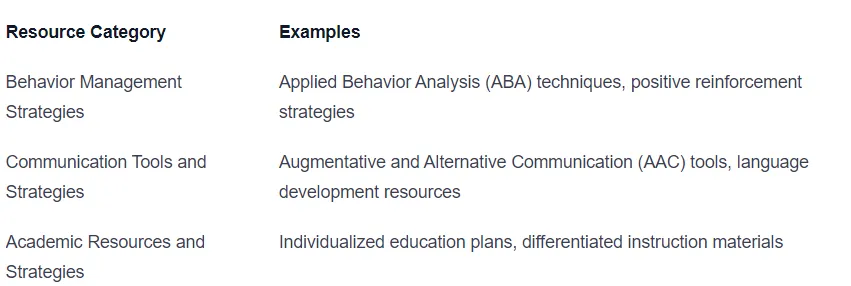The Autism Helpers Guide to Support and Resources
Discover the power of The Autism Helper! A comprehensive guide to resources and support for individuals with autism.

Understanding The Autism Helper
The Autism Helper is a comprehensive platform that provides a wealth of information and tools to help parents, caregivers, and educators support individuals with autism. With a focus on empowering educators and creating supportive learning environments, The Autism Helper offers a range of resources and strategies to enhance the lives of individuals with autism.
Overview of The Autism Helper
The Autism Helper serves as a valuable resource for individuals seeking support and guidance in understanding and working with autism. Founded by Sasha Long, a renowned expert in the field, The Autism Helper offers a wide range of resources, strategies, and tools to support a child's development. Through their comprehensive approach, The Autism Helper aims to create a positive and inclusive environment for individuals on the autism spectrum.

Resources and Tools Offered by The Autism Helper
The Autism Helper provides a multitude of resources and tools to assist parents, caregivers, and educators in supporting individuals with autism. These resources cover various aspects of autism management, including behavior management strategies, communication tools and strategies, and academic resources [1].

Teachers and parents find The Autism Helper's resources to be time-saving and effective in helping individuals with autism learn new skills and strategies. The available resources offer practical ideas and strategies that can be implemented immediately, benefiting both teachers and students.
By utilizing the resources and tools provided by The Autism Helper, parents, caregivers, and educators can enhance their understanding of autism and implement evidence-based strategies to support individuals with autism in their learning and development journey.
Supporting Individuals with Autism
When it comes to supporting individuals with autism, The Autism Helper offers a plethora of resources, strategies, and tools to aid in their development. These encompass behavior management strategies, communication tools and strategies, as well as academic resources and strategies.
Behavior Management Strategies
Effective behavior management plays a crucial role in supporting individuals with autism. The Autism Helper provides a range of strategies for parents and caregivers to navigate and implement. Some of these strategies include:
- Positive Reinforcement: Encouraging and rewarding desired behaviors can help reinforce positive habits and encourage further progress.
- Token Systems: Utilizing token systems can provide a visual representation of progress and reward systems, helping individuals with autism understand and engage in desired behaviors.
These behavior management strategies, offered by The Autism Helper, empower parents and caregivers to create a structured and supportive environment for individuals with autism, fostering growth and development.
Communication Tools and Strategies
Effective communication is vital for individuals with autism to express their needs, thoughts, and feelings. The Autism Helper offers an array of resources to assist parents and caregivers in enhancing their child's communication and language skills. These resources may include:
- Augmentative and Alternative Communication (AAC) Tools: Supporting individuals with limited verbal communication, AAC tools such as picture communication systems and speech-generating devices can aid in effective communication.
- Language Development Resources: The Autism Helper provides a variety of language development resources, including visual supports, social stories, and visual schedules, which can help individuals with autism better understand and navigate their environment.
By utilizing these communication tools and strategies, individuals with autism can enhance their ability to express themselves and engage with others.
Academic Resources and Strategies
Education is a fundamental aspect of supporting individuals with autism. The Autism Helper offers a wealth of academic resources and strategies to cater to the diverse needs and learning styles of individuals on the autism spectrum. These resources may include:
- Individualized Instruction: The Autism Helper emphasizes the importance of tailoring instruction to meet the unique needs of each individual, ensuring that they receive the support necessary to succeed academically.
- Visual Supports: Visual supports, such as visual schedules, visual task lists, and visual cues, can assist individuals with autism in understanding and following instructions, promoting independence and academic progress.
- Differentiated Materials: The Autism Helper provides user-friendly materials and resources that cater to different levels of need and learning styles, allowing educators and families to adapt instruction to suit individual requirements [2].
By incorporating these academic resources and strategies into the learning environment, The Autism Helper supports individuals with autism in achieving their educational goals and maximizing their potential.
Creating Structured Environments
When it comes to supporting individuals with autism, creating structured environments is essential. The Autism Helper, a well-known resource, offers various tools and strategies to assist educators, therapists, and parents in this endeavor. In this section, we will explore three key components of creating structured environments: visual supports and social stories, developing routines and visual schedules, and organization tools and strategies.
Visual Supports and Social Stories
Visual supports and social stories are valuable tools that can greatly benefit children with autism in improving communication, promoting understanding, and developing important skills. Visual supports, such as visual schedules, cue cards, and visual aids, provide individuals with a visual representation of tasks, activities, and expectations. These visuals help individuals with autism navigate their daily routines, understand sequential steps, and reduce anxiety by providing predictability and clarity.
Social stories, on the other hand, are narratives that describe social situations, events, or expectations in a structured and simplified manner. They help individuals with autism comprehend social cues, appropriate behavior, and expected responses in different situations. By using visual supports and social stories, individuals with autism can enhance their communication skills, reduce anxiety, and develop independence.
Developing Routines and Visual Schedules
The Autism Helper emphasizes the importance of developing routines and visual schedules to promote organization and predictability, which are beneficial for individuals with autism in developing independence and reducing anxiety. By using visuals, templates, and easy-to-implement tools, The Autism Helper assists in creating structured routines and visual schedules that suit the unique needs of individuals with autism.
Routines provide a sense of structure and familiarity, which can be calming for individuals with autism. Visual schedules, whether in the form of a daily calendar, task list, or a combination of both, help individuals understand and anticipate the sequence of events throughout their day. This visual representation aids in reducing anxiety and promoting independence by providing clear expectations and facilitating transitions between activities.
Organization Tools and Strategies
To support individuals with autism in maintaining organization and structure, The Autism Helper offers various tools and strategies. These resources include editable templates, visual schedules, and behavior management strategies. By utilizing these tools, educators, therapists, and parents can create structured and organized environments that cater to the diverse needs of individuals with autism spectrum disorder.
Organization tools, such as visual labels, bins, and storage systems, help individuals with autism locate and access materials, promoting independence and reducing frustration. Strategies like task analysis and visual reminders can assist individuals in breaking down tasks into manageable steps and following through with them.
By implementing organization tools and strategies, educators, therapists, and parents can create supportive environments that enhance learning, communication, and independence for individuals with autism.
In conclusion, by utilizing visual supports and social stories, developing routines and visual schedules, and employing organization tools and strategies, individuals with autism can thrive in structured environments. The resources offered by The Autism Helper empower educators, therapists, and parents to provide personalized and effective support to individuals with autism across various learning environments and settings.
The Autism Helper Curriculum
The Autism Helper Curriculum, established in 2012, is a comprehensive and individualized resource designed to support students with autism in both classroom and home settings. It focuses on addressing academic, social, communication, behavioral, and vocational skills.
Introduction to The Autism Helper Curriculum
The Autism Helper Curriculum was developed with the aim of providing educators, therapists, parents, and caregivers with the necessary tools and resources to meet the unique needs of learners with autism spectrum disorder. By offering structured, visually based materials, the curriculum aligns with research-based practices and evidence-based strategies to support effective instruction and intervention.
Comprehensive and Individualized Approach
One of the key strengths of The Autism Helper Curriculum is its comprehensive and individualized approach. Recognizing that each learner with autism has unique strengths, challenges, and learning styles, the curriculum offers a wide range of resources to tailor interventions and strategies to meet their specific needs. By taking an individualized approach, educators and caregivers can better support the development and progress of each learner.
User-Friendly Materials and Resources
The Autism Helper Curriculum places great emphasis on user-friendliness, ensuring that educators, therapists, parents, and caregivers can easily implement the materials and resources provided. By offering user-friendly materials, the curriculum aims to enhance the learning experience for individuals with autism. The accessibility and ease of use of the curriculum allow for seamless integration into daily routines and instruction, promoting consistency and continuity in learning.
The Autism Helper Curriculum continues to evolve and expand, adapting to the changing landscape of education, technology, and research. By staying up-to-date with the latest developments, the curriculum remains a valuable resource for individuals with autism, providing ongoing support and resources for their growth and development.
Collaboration and Support
Collaboration among educators, therapists, and parents is crucial in providing effective support for individuals with autism. The Autism Helper recognizes the importance of working together to create a cohesive and consistent approach to intervention and education.
Promoting Collaboration Among Educators, Therapists, and Parents
The Autism Helper emphasizes the need for collaboration among educators, therapists, and parents to ensure a holistic and comprehensive approach to supporting individuals with autism. By working together, professionals and caregivers can share knowledge, resources, and strategies, ultimately enhancing the overall support provided.
Collaboration promotes consistency in implementing behavioral strategies, communication tools, and organizational techniques across different learning environments and settings. It allows for a unified approach, ensuring that individuals with autism receive consistent support and interventions, whether they are at school, therapy centers, or home.
Consistency Across Learning Environments
Consistency is key when supporting individuals with autism. The Autism Helper recognizes the importance of maintaining consistency across different learning environments to promote generalization of skills. By aligning strategies and approaches used at school, therapy, and home, individuals with autism experience a more seamless transition and are better equipped to apply their skills in various settings.
When educators, therapists, and parents collaborate and maintain consistency, individuals with autism benefit from a cohesive support system. This consistency helps them understand expectations, reduces confusion, and promotes a sense of stability.
Testimonials and Real-World Applicability
The Autism Helper's strategies, tools, and resources have been widely embraced and appreciated by educators, therapists, and parents. Testimonials from professionals and caregivers highlight the real-world applicability and effectiveness of The Autism Helper's approach in supporting individuals with autism.
By providing evidence-based strategies, practical resources, and user-friendly materials, The Autism Helper empowers educators, therapists, and parents to make a positive impact on the lives of individuals with autism. The testimonials serve as a testament to the success of The Autism Helper's collaborative and supportive approach.
Collaboration and support among educators, therapists, and parents are essential in providing comprehensive and effective interventions for individuals with autism. By working together and maintaining consistency, professionals and caregivers can create a supportive environment that fosters growth, independence, and success for individuals with autism.
The Autism Helper and Sasha Long
The Story Behind The Autism Helper
The Autism Helper was founded by Sasha Long, a highly experienced and dedicated Board Certified Behavior Analyst (BCBA). Sasha's passion for supporting individuals with autism led her to create The Autism Helper as a platform to provide teachers and parents with the tools and resources they need to effectively support individuals with autism.
Sasha's journey began with her specialization in intensive one-on-one therapy services for individuals with autism. Through her extensive work and interactions with students, teachers, and parents, she recognized the need for comprehensive support and resources in the field of autism education and intervention. This realization became the driving force behind the creation of The Autism Helper.
Sasha Long's Expertise and Mission
As a BCBA, Sasha Long brings a wealth of expertise to The Autism Helper. Her in-depth knowledge of behavior analysis, evidence-based practices, and individualized strategies enables her to develop effective and practical resources for educators and parents. Sasha is dedicated to staying up-to-date with the latest research and best practices in the field of autism intervention, ensuring that The Autism Helper's resources are grounded in evidence-based approaches.
Sasha's mission with The Autism Helper is to empower educators, parents, and therapists with the knowledge and resources necessary to create a positive and supportive learning environment for individuals with autism. She recognizes the importance of collaboration between educators, therapists, and parents in order to provide consistent support and meet the unique needs of each individual with autism. By sharing her expertise and tools, Sasha aims to enhance the quality of education and intervention for individuals with autism.
Empowering Educators and Supportive Learning Environment
At the core of The Autism Helper's mission is the goal of empowering educators and fostering a supportive learning environment for individuals with autism. The resources and tools offered by The Autism Helper are carefully designed to address the specific needs of individuals with autism, focusing on areas such as communication skills, fostering independence, and improving social interactions.
Sasha Long understands the importance of collaboration between educators, parents, and therapists to create a comprehensive support system for individuals with autism. By working together as a team, the needs of the individual can be consistently met across all environments, ensuring a cohesive and supportive experience.
Through The Autism Helper, Sasha aims to equip educators and parents with practical strategies, visual supports, and user-friendly materials that can be easily implemented in various settings. By providing these resources, Sasha believes that educators and parents can create a positive and inclusive learning environment that nurtures the potential of individuals with autism.
The Autism Helper, under Sasha Long's guidance, continues to make a significant impact in the field of autism education and intervention. By providing accessible resources and promoting collaboration, Sasha and The Autism Helper team are making a difference in the lives of individuals with autism and the dedicated professionals who support them.
References
Does Your Child Have An Autism Diagnosis?
Learn More About How ABA Therapy Can Help
Find More Articles
Contact us
North Carolina, Nevada, Utah, Virginia
New Hampshire, Maine
Arizona, Colorado, Georgia, New Mexico, Oklahoma, Texas
.avif)




































































































